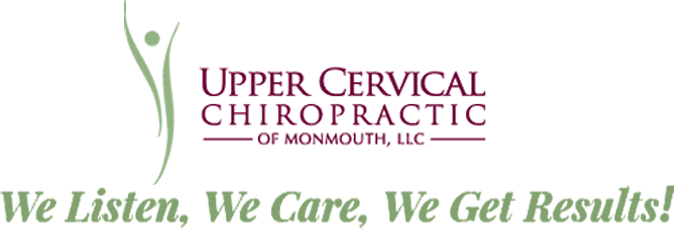Osteopenia vs. Osteoporosis: What You Need to Know for Strong, Healthy Bones
Osteopenia isn’t as well-known as osteoporosis, but that’s no surprise. Most of us don’t think much about our bones, that is, until something goes wrong. An unexpected fracture, a sudden loss of height, or a diagnosis that seems to come out of nowhere are often the first times bone health becomes a genuine concern. By then, what started as a silent issue may have already become a serious one.
Osteopenia and osteoporosis are different stages of the same issue, namely a loss of bone mineral density. However, the two conditions differ significantly in terms of the extent of bone loss. Understanding the difference can be the key to protecting your long-term mobility and health.
Unfortunately, many people are told to “wait and see” after a routine scan shows lower-than-normal bone density. But waiting may not be the best move. At Upper Cervical Chiropractic of Monmouth, we believe in a proactive approach to care, one that supports your body’s natural ability to self-regulate. You may not be able to see your bones or feel when something is wrong, which is why it’s so important to prioritize bone health, which is a critical part of overall wellness and longevity.
Table of Contents
What Is Osteopenia?
Osteopenia is a diagnosis that reveals your bones have lost some density, but not enough to be classified as osteoporosis. Think of it as a warning sign, like the type you might get on your car’s dashboard. Osteopenia indicates that your bone health requires attention.
Most people find out they have osteopenia by getting a bone density scan, also called a DEXA scan. This diagnostic test measures how much mineral content is in your bones. If your T-score falls between -1.0 and -2.5, you’ll likely be diagnosed with osteopenia. Osteopenia doesn’t cause pain or symptoms, so it’s nearly impossible to know bone loss is occurring. That’s why these scans are recommended for seniors as well as younger people who have risk factors like smoking and certain medical conditions.
But without action, osteopenia can progress silently until it crosses the threshold into osteoporosis. That’s why the goal isn’t just to monitor osteopenia. The goal is to intervene as early as possible so your body has a better chance of regaining strength.
What Is Osteoporosis?
Osteoporosis is a more advanced stage of bone loss. When bone loss reaches this point, it becomes porous, weak, and more prone to fractures. This means that even a minor bump or simple movement can cause a significant fracture. Osteoporosis is often called a “silent disease” because it usually develops without symptoms, and many sufferers don’t realize they have the condition until a fracture occurs. Hip, spine, and wrist fractures are some of the most common injuries caused by osteoporosis, and each can have devastating consequences to an individual’s health and well-being.
A fracture might seem like a temporary setback, but for many people, especially older adults, it can trigger a spiral of decline. Hip and spinal fractures are among the most serious, often leading to reduced mobility, long recovery times, and increased risk of complications like blood clots or pneumonia.
Even a single fracture can raise the likelihood of future breaks, especially if bone loss isn’t addressed. In fact, research shows that hip fractures in older adults are linked to a significantly higher risk of mortality within the first year. As independence decreases, it becomes harder to stay active and healthy, which in turn makes recovery even more difficult. That’s why prevention and early intervention are so important for overall well-being.
Key Differences Between Osteopenia and Osteoporosis
Osteopenia and osteoporosis are both levels of bone density loss. However, they aren’t the same condition. Osteopenia is a warning sign that bone density has started to decrease, but not to the point where bones are dangerously brittle. At this stage, there’s usually no pain or symptoms, and many people don’t even know they’re affected until a bone density scan reveals it. Osteoporosis, on the other hand, is a more advanced stage of bone weakening, where bones become more porous and fragile. It’s at this stage that fractures become more likely, even from something as simple as a sneeze or minor slip.
Fracture risk is the most important difference between the two. With osteopenia, the risk is elevated, but not yet critical. With osteoporosis, the chance of breaking a bone, especially in the hip, spine, or wrist, is significantly higher. If you’re diagnosed with osteopenia, you may still have time to minimize your bone density loss through lifestyle changes, diet, and supportive therapies. Osteoporosis, on the other hand, often requires a more aggressive approach and ongoing monitoring. While both conditions can be slowed or stabilized, prevention and early intervention are far more effective before bone loss reaches a critical point.
What Causes Bone Loss And Who’s at Risk?
Bone loss happens when the body breaks down old bone faster than it can build new bone tissue. Some bone thinning is a normal part of aging; however, there are several factors that can accelerate the process, leading to osteopenia and eventually osteoporosis. Hormonal changes, particularly reduced estrogen during menopause, are a major contributor. But age isn’t the only factor at play.
Other causes, such as poor nutrition, leading a sedentary lifestyle, and chronic stress, can all be risk factors. Certain medications, such as steroids or proton pump inhibitors, may also contribute to bone loss. Additionally, autoimmune or digestive disorders that affect nutrient absorption can also weaken bones over time.
So who should be concerned? While postmenopausal women are at the highest risk, bone loss can affect people of all ages and genders. You may be more vulnerable if you:
- Are over age 50
- Have a small frame or low body weight
- Have a family history of osteoporosis
- Experienced early menopause or low estrogen
- Take medications that interfere with bone metabolism
- Get limited physical activity or sun exposure
- Smoke or drink excessively
- Struggle with chronic inflammation or malabsorption issues
Even younger adults, especially women in their 30s or 40s, can start showing signs of low bone density, particularly if they’ve had hormone imbalances, eating disorders, or extended periods of inactivity. The earlier bone loss is identified, the easier it is to take meaningful action.
The challenge with osteopenia is that it rarely causes symptoms. You don’t feel bones thinning. You don’t wake up with pain or throbbing. That’s why so many people don’t realize anything is wrong until after a fracture occurs. And by then, the road to recovery is much longer, and sometimes life-altering. That’s why catching osteopenia early and taking action now can make a powerful difference.
The good news is that with the proper support, it is possible to slow, stop, or even reverse bone loss before it progresses into osteoporosis.
Natural Approaches to Support Bone Health
Most people diagnosed with osteopenia or osteoporosis are offered prescription medications, usually from a class of drugs called bisphosphonates. While these medications can slow bone loss, they can come with side effects like digestive issues, joint pain, and in rare cases, more serious complications like jaw problems or atypical fractures. These downsides leave many people looking for more natural ways to care for their bones, either instead of or alongside medication.
There are several science-backed lifestyle changes that can help with both the prevention of bone loss and the maintenance of bone tissue:
- Eat for bone health: Include leafy greens, nuts, seeds, dairy (if tolerated), and fortified foods for calcium, magnesium, vitamin D, and K2.
- Supplement wisely: Consider the correct amount of calcium, vitamin D and magnesium if your levels are low.
- Stay active: Walking, strength training, yoga, or tai chi can help in your efforts to maintain bone strength.
- Cut back on unhealthy habits: Reduce soda, alcohol, and smoking as these all interfere with bone repair.
- Prioritize rest and relaxation: Poor sleep and high stress can disrupt bone-supporting hormones.
Even with all these strategies in place, some people still struggle to make progress. So don’t beat yourself up if you don’t see results from these lifestyle changes. In those cases, the missing piece may not be about what you’re eating or doing, but how your body is aligned.
How Spinal Alignment Affects Bone Health
The way your body carries itself can play a significant role in how bones wear down, absorb nutrients, and respond to stress. Poor posture and spinal misalignments can result in an uneven distribution of weight and pressure throughout the body.
Over time, these imbalances can lead to balance issues, increasing the risk of falling, joint deterioration, muscle fatigue, and stress fractures. Areas such as the hips, lower back, and knees are particularly susceptible to these injuries. If the body is consistently out of balance, even low-impact movement can become risky for someone with reduced bone density.
There’s also a deeper layer: alignment affects the nervous system, which plays a key role in regulating how your body communicates and functions, and this includes hormone regulation, nutrient absorption, and balance. When that system is disrupted, your body’s ability to build and maintain strong bones can suffer.
Misalignments are all too common; they can happen due to minor injuries, falls, or even just the daily impact of life. Addressing these misalignments helps support your body’s ability to heal itself and thrive from the inside out.
How QSM3 Supports Those at Risk for Osteoporosis
At Upper Cervical Chiropractic of Monmouth, we use a highly specialized, non-invasive method called Quantum Spinal Mechanics3 (QSM3) to support better alignment and nervous system function. While QSM3 is not a treatment for osteoporosis, it can help create the right conditions for the body to function more efficiently, especially when bone density is compromised.
When the spine is misaligned, it can increase the risk of falls, joint strain, and postural collapse over time. This is especially concerning for people already dealing with weakened bones. QSM3 focuses on restoring balance and structural integrity throughout the body, reducing pressure points and strain that can lead to further complications. By bringing balance back to your body, QSM3 delivers the relief your body needs to support the body’s natural healing process.
Because QSM3 uses gentle, precise movements, without twisting, popping, or force, it’s often a better fit for those who may not tolerate traditional chiropractic care. We take a whole-body approach, designed to help the nervous system regulate better posture, movement, and healing. For patients working to protect or rebuild their bone health, this gentle alignment work can be a valuable part of a broader support strategy.
What to Expect at Your First Visit
If you’re new to Upper Cervical Chiropractic of Monmouth, you can expect a calm, thoughtful experience right from the start. There’s no pressure or rushing. We listen to you because we believe there’s no “one-size-fits-all” approach when it comes to healing. Instead, your first visit is focused on hearing your concerns and learning about your lifestyle.
We begin by reviewing your full health history, including any history of fractures, bone density testing (like DEXA scans), or other concerns you may have about posture, mobility, or overall well-being. Next comes a detailed postural evaluation using gentle, non-invasive tools that help uncover hidden imbalances. If necessary, X-rays are used to evaluate your condition and spinal health. If QSM3 care looks like a good fit, we’ll walk you through a personalized plan of action.
Don’t Wait Until There’s a Break
Bone health rarely gets our attention until there’s a fracture, a scan result, or a scary diagnosis. But waiting for that moment means missing the chance to take early, preventive action. Whether you’ve been told you have osteopenia, are worried about osteoporosis, or simply want to support your body as you age, now is the time to act.
At Upper Cervical Chiropractic of Monmouth, we’re here to help you take control of your healing process, at whatever stage you are. Through gentle QSM3 care and a whole-body approach to balance and alignment, we support your body’s natural ability to function, heal, and stay strong. You won’t be rushed or pressured, just guided with care and respect for your wellness goals.
You don’t need to wait for a fracture to make a change. Schedule your complimentary consultation today and learn how upper cervical chiropractic care can become part of your journey to lifelong strength and wellness.




